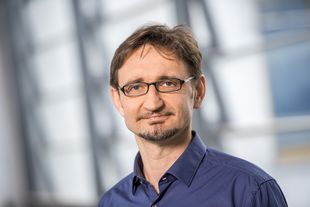The “Institute for Chemistry and Environmental Engineering” at the Faculty for Mechanical Engineering of the Universität der Bundes wehr München (UniBW M) specializes in the chemical analysis of environmental samples. The institute has a broad range of measurement techniques at its disposal to investigate organic and inorganic substances in liquid, solid and gaseous matrices.
Research activities focus on aerosol research, in particular, the chemical and physical characterization of air pollutants and climate-relevant compounds, as well as on the measurement of exhaust gases in combustion processes. One focal point of current and future research lies in examining the exhaust gases of ships, aircraft engines, and road traffic together with testing modern exhaust gas after-treatment systems. For this purpose, the faculty’s facilities, e.g., a vehicle chassis dynamometer incl. CVS tunnel, various light-duty engine test benches, an aircraft combustion chamber simulator, and a helicopter gas turbine test bench can be used. Another main emphasis is the research on transport-related emissions from non-combustion processes. These include the abrasion of brakes, tires, drive components, and road surfaces.
The institute is headed by Prof. Dr. rer. nat. Thomas W. Adam – a member of the expert commission PMP (Particle Measurement Program) at UNECE (United Nations Economic Commission For Europe) – which is currently developing a statutory testing method to regulate brake dust in the automotive industry.
Facts file Prof. Dr. Thomas Adam, graduate chemist & aerosol scientist
• since 2017: Full Professor at the Institute for Chemistry and Environmental Engineering at the Universität der Bundeswehr München.
• since 2017: Deputy Director at CMA-HMGU
• 2016: Founding Adviron Environmental Consulting
• 2011–2015: AUDI AG Ingolstadt, Emission test center
• 2007–2010: European Commission Joint Research Centre Ispra, Transport and Air Quality Unit • 2002 – 2007: GSF – Forschungszentrum für Umwelt und
Gesundheit, now HMGU
• 2001: Alfred Wegener Institute for Polar & Marine Research Bremerhaven
Another field of activity lies in investigating aging processes in the atmosphere and their influence on the composition of urban, rural, and Alpine ambient air.
The chemical/physical tests carried out by the institute are supported by biological analyses (e.g. invitro cell studies) conducted at JMSC. The goal here is to provide an indication of potential health hazards for humans. For this purpose, the institute has got a modern mobile measurement laboratory for immission and emission analyses. One of the institute’s specialist areas lies in the real-time measurement of gaseous organic pollutants in combustion processes. It’s a procedure, making it possible to simultaneously detect a large number of hydrocarbons which damage health at trace levels. The procedure enables online process controls on combustion engines, residential heating, power plants, and industrial plants. The institute uses the technique of time-of-flight mass spectrometry coupled with soft photoionization processes, i.e. single-photon ioniza-tion (SPI) and resonance-enhanced multiphoton ionization (REMPI) to achieve this. The use cases for the work done by the “Institute for Chemistry and Environmental Engineering” are numerous. But to stay ahead of the curve, strategic cross-discipline collaboration will be critical. As a result, in summer 2018, the institute signed a cooperation agreement with the Helmholtz Zentrum München. Through this cooperation, approximately 50 scientists and engineers at the Universität der Bundeswehr München, Helmholtz Zentrum München, nd the University of Rostock spanning mechanical and environmental engineering, chemistry, physics, and biology are currently working on the research of gaseous pollutants and particulate matter in emissions and in the atmosphere as well as their impact on human health and the environment.
![]()


